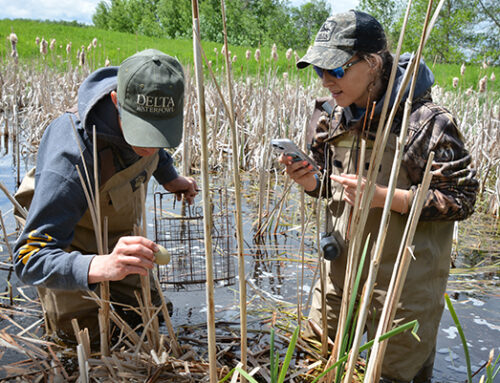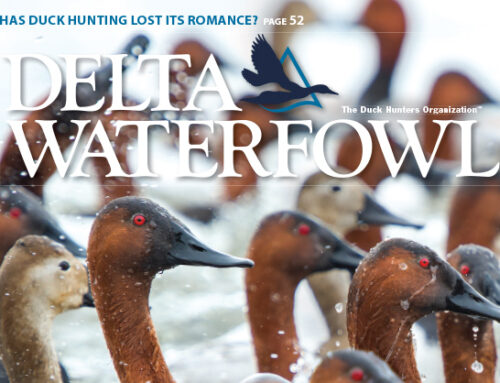2018 Duck Survey
Numbers Released!
Numbers Released!


 North America’s spring duck population declined, but most species remain above long-term averages, according to the 2018 Waterfowl Population Status Report.
North America’s spring duck population declined, but most species remain above long-term averages, according to the 2018 Waterfowl Population Status Report.
The annual survey, conducted jointly by the U.S. Fish and Wildlife Service and Canadian Wildlife Service since 1955, puts the breeding duck population at 41.19 million, a 13 percent decrease over last year’s population of 47.27 million, but still 17 percent above the long-term average. Overall, the 2018 survey marks the lowest total breeding duck population estimate since 2010.
“The breeding population decreased, but remains quite strong, with most species remaining near or above long-term averages,” said Dr. Frank Rohwer, president and chief scientist of Delta Waterfowl. “Ducks declined due to dry conditions in large portions of the breeding grounds. Fortunately, we continue to benefit from ‘carryover birds’ hatched during highly productive springs over the past several years.”
Following a record high two years ago, mallards declined 12 percent to 9.26 million, but remain 17 percent above the long-term average. Wigeon are the only index species that showed an increase, climbing 2 percent to 2.82 million, 8 percent above the long-term average. Blue-winged teal fell 18 percent to 6.45 million, 27 percent above the long-term average. Gadwalls dropped 31 percent to 2.89 million, 43 percent above the long-term average. Green-winged teal decreased 16 percent to 3.04 million, still 42 percent above the long-term average. Northern shovelers declined 3 percent to 4.21 million, 62 percent above the long-term average. Redheads declined 10 percent to 1.00 million, 38 percent above the long-term average. Canvasbacks dropped 6 percent to 686,000, 16 percent above the long-term average.
Only two breeding population estimates are below long-term averages. Northern pintails declined a concerning 18 percent to 2.37 million, 40 percent below the long-term average. Scaup (lessers and greaters combined) declined 9 percent to 3.99 million, 20 percent below the long-term average.
“Bluebills are drifting dangerously close to a return to restrictive harvest regulations,” Rohwer said. “And the pintail number is disappointing. We’d hoped that good wetland conditions across Montana, and portions of southern Alberta and southeastern Saskatchewan, would be enough to give pintails a boost. That was clearly not the case.”
Across the U.S. and Canada, the May pond count registered 5.23 million — 14 percent lower than last year and in line with the long-term average. Pond counts in prairie and parkland Canada, which covers Alberta, Saskatchewan and Manitoba, decreased 15 percent to 3.66 million, but were still 4 percent above the long-term average. Pond counts in the north-central United States, which covers Montana and the Dakotas, declined 11 percent to 1.57 million, 8 percent below the long-term average.
“The pond count has been above, in some cases way above, the long-term average for many years, and we’ve enjoyed huge duck estimates as a result,” Rohwer said. “This year, the count is average and in some cases, well-below average.”
Dry conditions in the eastern Dakotas (down 32 percent) and southern Saskatchewan (down 21 percent) impacted duck distribution this spring.
“Dry conditions across many areas of the prairies doesn’t bode well for duck production,” Rowher said. “However, timely rains in during nesting season, particularly in North Dakota, certainly aided duck production in some regions.”
And following May surveys, habitat conditions grew even more variable, forcing ducks to further compete for breeding habitat and decreasing their odds of nest success.
That could impact waterfowl seasons, because hunters shoot the fall flight, not the breeding population.
“There will be plenty of ducks in the fall flight, but unlike years when there are plenty of easily decoyed juveniles, hunters can expect savvy, adult birds,” Rohwer said.
To view the complete 2018 Waterfowl Population Status Report, click here.






Leave A Comment